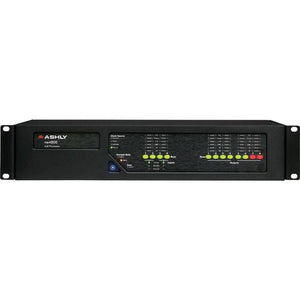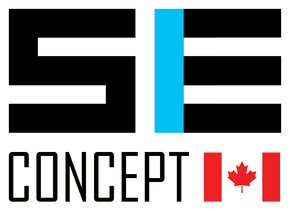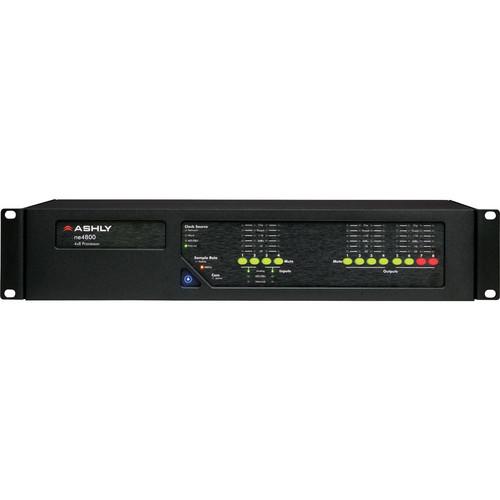Subscribe to receive promotions, discounts and latest news from SE Concept
Professional Audio Shop Established Since 1996
| Digital Signal Processing can accomplish the same functions found in analog signal processors, but performs them mathematically in the digital domain, with more precision and accuracy than its analog counterpart. Since DSP is a software-based process, parameters and processing functions are easily changed and updated by revising the software, rather than redesigning the hardware. DSP can be found in most modern outboard effects devices, such as a reverb or delay unit, or it can be integrated into a DAW or digital mixing console. |
| Ethernet is a family of frame-based computer networking technologies for local area networks (LANs). The name comes from the physical concept of the ether. It defines a number of wiring and signaling standards for the Physical Layer of the OSI networking model, through means of network access at the Media Access Control (MAC)/Data Link Layer, and a common addressing format. |
| Sound is a travelling wave which is an oscillation of pressure transmitted through a solid, liquid, or gas, composed of frequencies within the range of hearing and of a level sufficiently strong to be heard, or the sensation stimulated in organs of hearing by such vibrations. |
| An Analog (or analogue) signal is any continuous signal for which the time varying feature (variable) of the signal is a representation of some other time varying quantity, i.e., analogous to another time varying signal. |
| Inputs are the signals or data received by the system, and outputs are the signals or data sent from it. The term can also be used as part of an action; to "perform I/O" is to perform an input or output operation. I/O devices are used by a person (or other system) to communicate with electronic equipment. |
| Sound is a travelling wave which is an oscillation of pressure transmitted through a solid, liquid, or gas, composed of frequencies within the range of hearing and of a level sufficiently strong to be heard, or the sensation stimulated in organs of hearing by such vibrations. |
| A digital audio standard developed by the Audio Engineering Society (AES) and the European Broadcast Union (EBU), also known as AES3. The standard describes a format for transmitting two channels of digital audio along a serial cable. Found mostly on professional equipment, it uses XLR or fiberoptic plugs and connectors. |
| A microphone is an acoustic-to-electric transducer or sensor that converts sound into an electrical signal. In 1876, Emile Berliner invented the first microphone used as a telephone voice transmitter. Microphones are used in many applications such as telephones, tape recorders, hearing aids, motion picture production, live and recorded audio engineering, in radio and television broadcasting and in computers for recording voice, VoIP, and for non-acoustic purposes such as ultrasonic checking. |
| Short for multiple. In audio work, a mult is a parallel connection (in a patch bay or with specially built cables or wiring) used to feed an output to more than one input. A "Y" cable is one type of mult connection. |
| A bit or binary digit is the basic unit of information in computing and telecommunications; it is the amount of information that can be stored by a digital device or other physical system that can usually exist in only two distinct states. These may be the two stable positions of an electrical switch, two distinct voltage or current levels allowed by a circuit, two distinct levels of light intensity, two directions of magnetization or polarization, etc. |
| An Equalizer or "EQ" is a circuit that allows the frequency-selective manipulation of a signal's amplitude. The simplest equalizers are shelving types, offering the ability to cut or boost gain above or below a given frequency. Examples include the treble and bass controls found in home stereo systems or guitar amps. More complex circuits that allow tonal shaping in multiple frequency bands include graphic and parametric equalizers. |
We have a 30-day return policy, which means you have 30 days after receiving your item to request a return.
To be eligible for a return, your item must be in the same condition that you received it, unused, with all accessories and in its original packaging. You’ll also need the receipt or proof of purchase.
To start a return, you can contact us at boutique@seconcept.com. If your return is accepted, we’ll send you a return shipping label (at your expenses) as well as instructions on how and where to send your package back. Items sent back to us without first requesting a return will not be accepted and not refunded.
You can always contact us for any questions prior to purchase by email at: boutique@seconcept.com.
Damages and issues
Please inspect your order upon reception and contact us immediately if the item is defective, damaged or if you receive the wrong item, so that we can evaluate the issue and make it right.
Exceptions / non-returnable items
All Returns must contain all associated packaging and materials (ie accessories, manuals, wires, etc). Merchandise that is not returned in brand-new condition, including damages, abuse, marks, showing wear, or with missing packaging or accessories, will be subject to additional charges. Shipping and Handling charges (delivery and return) are non-refundable, including any shipping fees not directly incurred that are part of a free shipping promotion. Any items packaged with software, including but not limited to, DJ Controllers, Audio Interfaces, etc., must be returned with the original software disc including serial number and proof of deactivation.
We cannot accept returns on liquidation, special orders, liquid, needles, parts, used, sales, open box item or gift cards.
Exchanges
The fastest way to ensure you get what you want is to return the item you have, and once the return is accepted, make a separate purchase for the new item.
Refunds
We will notify you once we’ve received and inspected your return, and let you know if the refund was approved or not. If approved, you’ll be automatically refunded on your original payment method. Please remember it can take some time for your bank or credit card company to process and post the refund too.
Shop In Store
Come try your favorite dj controller in store, see the latest light effects in action! See our specialist for a good advice.
Buy Online & Pick-up Same Day
If a product shows ''Ready to Ship'' you can always select ''Pickup in store'' at checkout and come the same day at your earliest convenience
Gift Card Available Online
Make a surprise buy a Gift Card
0
Please wait...


| Digital Signal Processing can accomplish the same functions found in analog signal processors, but performs them mathematically in the digital domain, with more precision and accuracy than its analog counterpart. Since DSP is a software-based process, parameters and processing functions are easily changed and updated by revising the software, rather than redesigning the hardware. DSP can be found in most modern outboard effects devices, such as a reverb or delay unit, or it can be integrated into a DAW or digital mixing console. |
| Ethernet is a family of frame-based computer networking technologies for local area networks (LANs). The name comes from the physical concept of the ether. It defines a number of wiring and signaling standards for the Physical Layer of the OSI networking model, through means of network access at the Media Access Control (MAC)/Data Link Layer, and a common addressing format. |
| Sound is a travelling wave which is an oscillation of pressure transmitted through a solid, liquid, or gas, composed of frequencies within the range of hearing and of a level sufficiently strong to be heard, or the sensation stimulated in organs of hearing by such vibrations. |
| An Analog (or analogue) signal is any continuous signal for which the time varying feature (variable) of the signal is a representation of some other time varying quantity, i.e., analogous to another time varying signal. |
| Inputs are the signals or data received by the system, and outputs are the signals or data sent from it. The term can also be used as part of an action; to "perform I/O" is to perform an input or output operation. I/O devices are used by a person (or other system) to communicate with electronic equipment. |
| Sound is a travelling wave which is an oscillation of pressure transmitted through a solid, liquid, or gas, composed of frequencies within the range of hearing and of a level sufficiently strong to be heard, or the sensation stimulated in organs of hearing by such vibrations. |
| A digital audio standard developed by the Audio Engineering Society (AES) and the European Broadcast Union (EBU), also known as AES3. The standard describes a format for transmitting two channels of digital audio along a serial cable. Found mostly on professional equipment, it uses XLR or fiberoptic plugs and connectors. |
| A microphone is an acoustic-to-electric transducer or sensor that converts sound into an electrical signal. In 1876, Emile Berliner invented the first microphone used as a telephone voice transmitter. Microphones are used in many applications such as telephones, tape recorders, hearing aids, motion picture production, live and recorded audio engineering, in radio and television broadcasting and in computers for recording voice, VoIP, and for non-acoustic purposes such as ultrasonic checking. |
| Short for multiple. In audio work, a mult is a parallel connection (in a patch bay or with specially built cables or wiring) used to feed an output to more than one input. A "Y" cable is one type of mult connection. |
| A bit or binary digit is the basic unit of information in computing and telecommunications; it is the amount of information that can be stored by a digital device or other physical system that can usually exist in only two distinct states. These may be the two stable positions of an electrical switch, two distinct voltage or current levels allowed by a circuit, two distinct levels of light intensity, two directions of magnetization or polarization, etc. |
| An Equalizer or "EQ" is a circuit that allows the frequency-selective manipulation of a signal's amplitude. The simplest equalizers are shelving types, offering the ability to cut or boost gain above or below a given frequency. Examples include the treble and bass controls found in home stereo systems or guitar amps. More complex circuits that allow tonal shaping in multiple frequency bands include graphic and parametric equalizers. |



